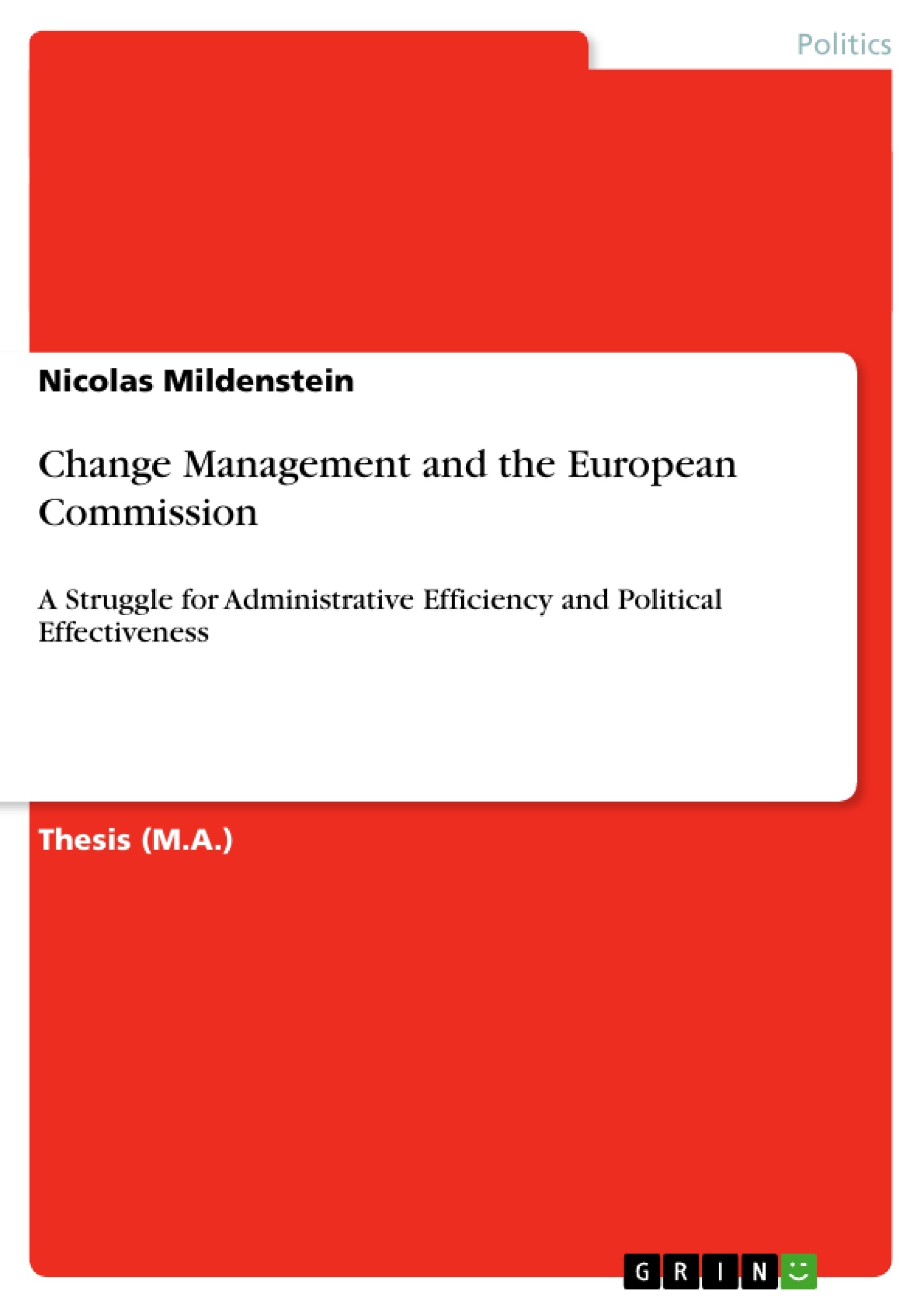Since the demise of the Santer Commission, internal reform of the European Commission (EC) has received increased academic and political attention. The more recent academic discourse has focused on assessing outcomes of the Kinnock reforms but is marked by divergent approaches and conflicting interpretations. This text proposes to address these issues by embedding the more practical EC Reform discourse within the more abstract Organization Theory (OT) discourse and applying coherent models of organization and change to EC reform.
The first part of the text organizes the OT field within a metatheoretical matrix, proposes coherent models of organization and change, and assesses the dynamics of the management framework market. The second part connects the OT to the EC Reform discourse by analyzing the transfer of management practices from the private to the public sector and by identifying major adoption types across the private-public sector continuum. The third part uses the established models to investigate the change
management history of the European Commission, and systematically relates internal management of change to external political action.
More specifically, the first part argues that the essence of most organization theories and management frameworks can be combined across four different onto-epistemologies. This allows drafting a comprehensive model of organization and change that can accommodate the majority of theoretical perspectives and research questions.
The second part concludes that the transfer of private sector practices has accelerated significantly since the 1980s, mostly as a function of increased environmental pressures on public sector organizations. Since international organizations (incl. the EC) face comparatively low degrees of pressure, they are more likely to be late stage adopters.
The third part confirms the EC as a late stage adopter as major internal reform could be avoided for roughly 20 years until increasing environmental pressures culminated in the Kinnock Reforms in 1999/2000. While the design followed a modern managerial orientation, implementation shifted to a more
traditional focus on control systems. The net result has been a higher degree of overall strategic coherence and control at the expense of some policy initiative at the service level. In future, the EC will have to focus on finding the right balance between continuous systems optimization and organizational development.
Inhaltsverzeichnis (Table of Contents)
- Introduction
- Working through the OT discourse
- Introduction
- Developing a metatheoretical tool
- Preliminary remarks
- Ontology
- Epistemology
- Four paradigms
- Describing patterns of discourse progression
- Drafting coherent models for organization and change
- Preliminary remarks
- Organization
- Change
- Assessing framework market dynamics
- Connecting the OT with the EC reform discourse
- Introduction
- Tracing the convergence of rhetoric and practice
- Exploring the divergence between rhetoric and practice
- Explaining different adoption patterns
- Preliminary remarks
- Three types of organization
- Change need, change readiness, and the strategy mix
- Working through the EC reform discourse
- Introduction
- Defining the European Commission
- Exploring change before Kinnock
- Describing the European Commission in 1999
- Assessing the Kinnock Reforms
- Preliminary remarks
- Context
- Content
- Implementation
- Evaluation
- Exploring change after Kinnock
Zielsetzung und Themenschwerpunkte (Objectives and Key Themes)
This work aims to analyze the European Commission’s internal reforms since the Santer Commission’s demise through the lens of Organization Theory (OT). It seeks to provide a comprehensive model of organization and change that can be applied to the EC’s reform history, demonstrating how the transfer of management practices from the private to the public sector impacted its internal management and external political action. The key themes explored in this work include:- The development and application of a metatheoretical framework to encompass diverse theoretical perspectives within the OT field.
- The dynamics of the management framework market and the transfer of private sector practices to the public sector, specifically within international organizations like the EC.
- The analysis of the EC's change management history, focusing on its evolution from a late-stage adopter to a more change-ready organization.
- The internal struggle for decision and definition authority during the Kinnock Reforms, highlighting the tension between modern managerial approaches and traditional bureaucratic control systems.
- The ongoing need for the EC to find a balance between continuous systems optimization and organizational development.
Zusammenfassung der Kapitel (Chapter Summaries)
The first chapter introduces the topic of EC reform and the need for a theoretical framework to analyze its complexities. Chapter 2 focuses on the Organization Theory (OT) discourse, presenting a metatheoretical matrix that encompasses diverse onto-epistemological perspectives and allows for drafting coherent models of organization and change. It also explores the dynamics of the management framework market. Chapter 3 connects OT to the EC reform discourse by examining the transfer of management practices from the private to the public sector, outlining the different adoption patterns and highlighting the specific challenges faced by international organizations like the EC. Chapter 4 delves into the EC’s specific history of reform, analyzing the Kinnock reforms in detail. It examines their context, content, implementation, and evaluation, revealing the complex interplay between internal management and external political action. This chapter also explores the EC’s evolution towards a more change-ready organization after the Kinnock reforms.
Schlüsselwörter (Keywords)
The main focus of this work lies on the intersection of Organization Theory, change management, and the European Commission. It explores the application of theoretical models from the private sector to public organizations, especially in the context of international organizations like the EC. Key terms include: organization theory, change management, European Commission, public sector reform, Kinnock Reforms, late-stage adoption, private sector practices, metatheoretical framework, and onto-epistemological perspectives.- Quote paper
- Nicolas Mildenstein (Author), 2009, Change Management and the European Commission, Munich, GRIN Verlag, https://www.grin.com/document/147046



